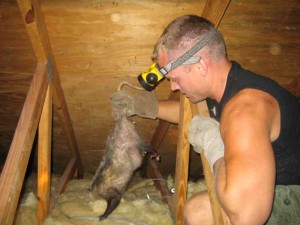How to Trap a Critter Living in the Ceiling of Atlanta Roofing
Critters are often found in ceilings, under the floor and seldom-used cabinets. One of the most unwanted inhabitants found in the ceilings of Atlanta roofing are rats, which pose both health and safety hazard. They are known to transmit diseases, including leptospirosis, rat-bite fever and plague. They also contaminate household food and water.
Wirings and house insulation are not safe from rodents, which gnaw on them, and therefore, expose your house to fire hazard. The best way to eliminate the danger posed by rodents is to prevent them from taking up residence in your ceiling. However, if critters have already migrated to your house and living under your roof, the ideal method to deal with them is through the use of traps.
Snap Traps
One of the most common methods employed by households to control rodent infestation are snap traps. Snap traps are very effective against roof rats and are recommended for indoor use. To attract rats into the trap, use food baits such as fruit, nuts and peanut butter. Place traps along paths usually travelled by rats. To catch roof rats, which prefer to travel off the ground, you can fix a trap along the horizontal pole of chain-link fences.
Glue Traps
These are made of either paper or vinyl and coated with thick adhesive on top. When rats walk over a glue trap, their feet get stuck to the glue rendering them immobile. Most of the time the struggling rat ends up having its face and body stuck to the adhesive, causing its death. These traps are scented with aromatic compounds to attract rodents.
Inspect the infested area and place the glue rats along the walls since rats prefer to travel near walls. Put the traps in those places where rodent activity is highest.
Electronic Traps
As the name implies, this type of trap electrocutes the rat that enters the box. These are battery-powered traps and disposable, so there is no need for you to remove the rat inside. The product is available to accommodate different rat and mice sizes. Because of its design, this type of trap is more expensive than the common snap trap.
General Trap Use Guidelines
Whatever type of trap you may be using, the number-one rule in using traps is to place plenty of them. Rat population is normally higher than your expectations, so you will be needing a lot more traps than anticipated. Position multiple traps to maximize area coverage and increase the chances of rats crossing over them. Since rats are suspicious of new objects, place unset traps to make them familiar to rats.
